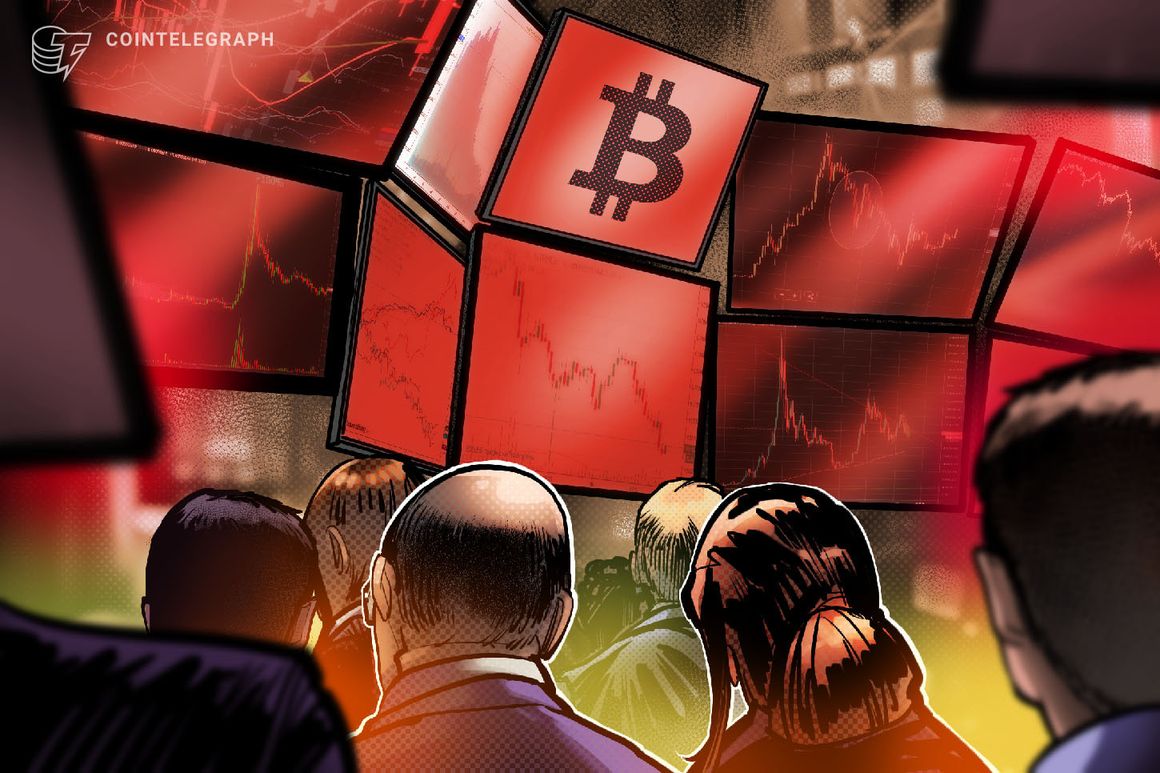Bitcoin price drops to a two-month low — Did pro traders benefit?

The price of Bitcoin fell by 11.5% from Aug. 16 to Aug. 18, resulting in $900 million worth of long positions being liquidated and causing the price to hit a two-month low. Before the drop, many traders expected a breakout in volatility that would push the price upward, but that was obviously not the case. With the substantial liquidations, it’s important to address whether professional traders gained from the price crash.
Bitcoin just saw one of its largest daily liquidations by volume in history.
Starting at 4:30 PM yesterday, #Bitcoin fell 7.5% in 20 MINUTES, erasing $42 billion in market cap.
This mass-liquidation event involved more outflows in 1 day than during the FTX collapse in November… pic.twitter.com/KmVNkXoOLw
— The Kobeissi Letter (@KobeissiLetter) August 18, 2023
There’s a common belief among cryptocurrency traders that whales and market makers have an edge in predicting significant price shifts and that this allows them to gain the upper hand over retail traders. This notion holds some truth, as advanced quantitative trading software and strategically positioned servers come into play. However, this doesn’t make professional traders immune to substantial financial losses when the market gets shaky.
For larger-sized and professional traders, a majority of their positions may be fully hedged. Comparing these positions with previous trading days allows for estimations on whether recent movements anticipated a widespread correction in the cryptocurrency market.
Margin longs at Bitfinex and OKX were relatively high
Margin trading lets investors magnify their positions by borrowing stablecoins and using the funds to acquire more cryptocurrency. Conversely, traders who borrow Bitcoin (BTC) employ the coins as collateral for short positions, indicating a bet on price decline.
Bitfinex margin traders are known for swiftly establishing position contracts of 10,000 BTC or greater, underscoring the involvement of whales and substantial arbitrage desks.
As depicted in the chart below, the Bitfinex margin long position on Aug. 15 stood at 94,240 BTC, nearing its highest point in four months. This suggests that professional traders were entirely caught off guard by the abrupt BTC price crash.
Unlike futures contracts, the equilibrium between margin longs and shorts isn’t inherently balanced. A high margin lending ratio signifies a bullish market, while a low ratio suggests a bearish sentiment.

The chart above shows the OKX BTC margin lending ratio, which approached 35 times in favor of long positions on Aug. 16. More importantly, this level aligned with the preceding seven-day average. This implies that even if external factors skewed the metric previously, it can be deduced that whales and market makers maintained their position on margin markets before the Bitcoin price collapse on Aug. 16 and Aug. 17. This information supports the argument that professional traders were unprepared for any form of negative price movement.
Futures long-to-short data proves traders were unprepared
The net long-to-short ratio of the top traders excludes external factors that may have exclusively influenced the margin markets. By consolidating positions across perpetual and quarterly futures contracts, a clearer insight can be gained into whether professional traders are leaning toward a bullish or bearish stance.
Occasional methodological disparities among different exchanges exist, prompting viewers to track changes rather than fixate on absolute values.

Prior to the release of the Federal Reserve's Federal Open Market Committee minutes on Aug. 16, prominent BTC traders on Binance exhibited a long-to-short ratio of 1.37, aligning with the peak levels observed in the previous four days. A similar pattern emerged on OKX, where the long-to-short indicator for Bitcoin’s leading traders reached 1.45 moments before the BTC price correction commenced.
Related: Why did Bitcoin drop? Analysts point to 5 potential reasons
Irrespective of whether those whales and market makers augmented or diminished their positions post the initiation of the crash, data stemming from BTC futures further substantiates the lack of readiness in terms of reducing exposure prior to Aug. 16, be it in futures or margin markets. Consequently, a reasonable assumption can be made that professional traders were taken by surprise and did not profit from the price crash.
This article is for general information purposes and is not intended to be and should not be taken as legal or investment advice. The views, thoughts, and opinions expressed here are the author’s alone and do not necessarily reflect or represent the views and opinions of Cointelegraph.



